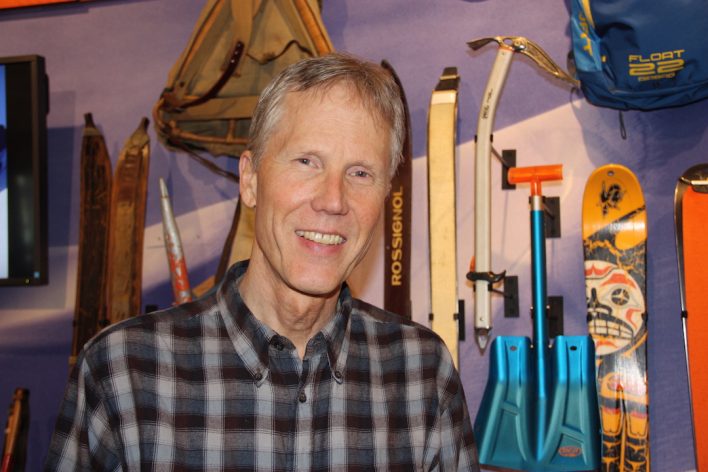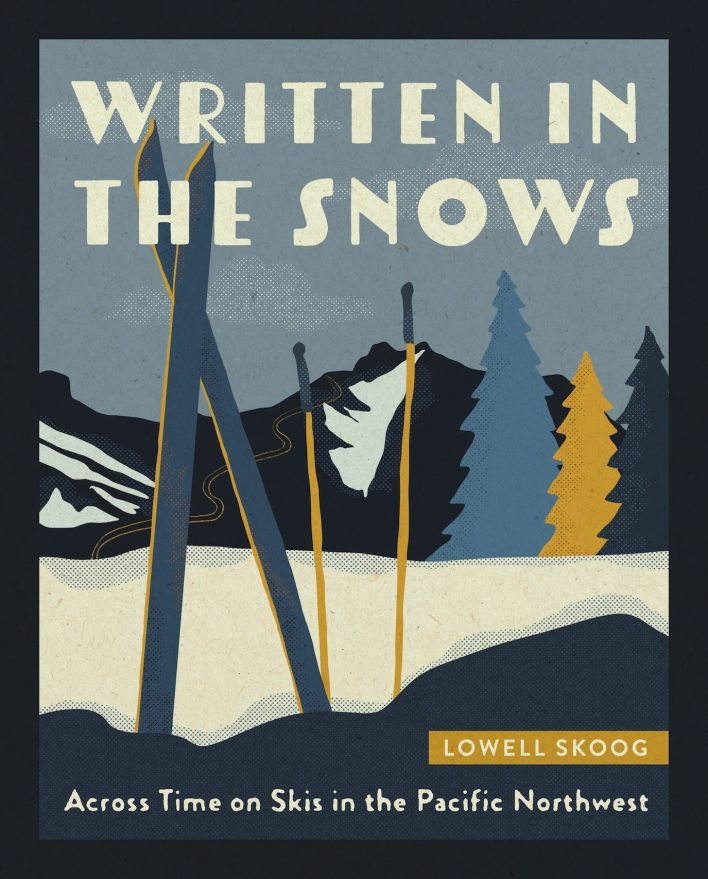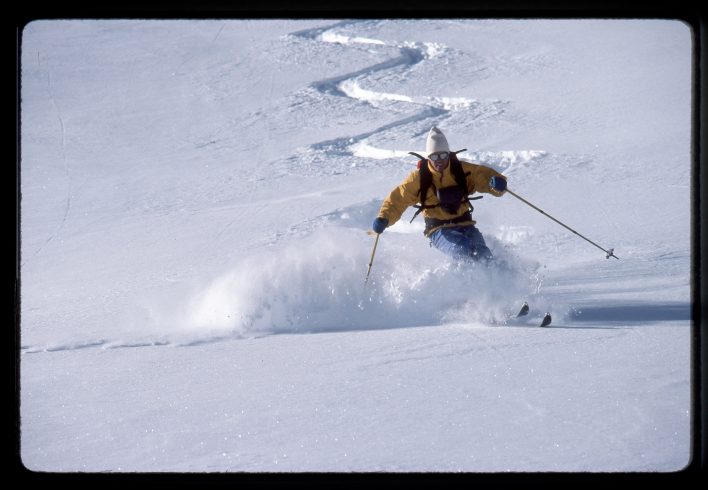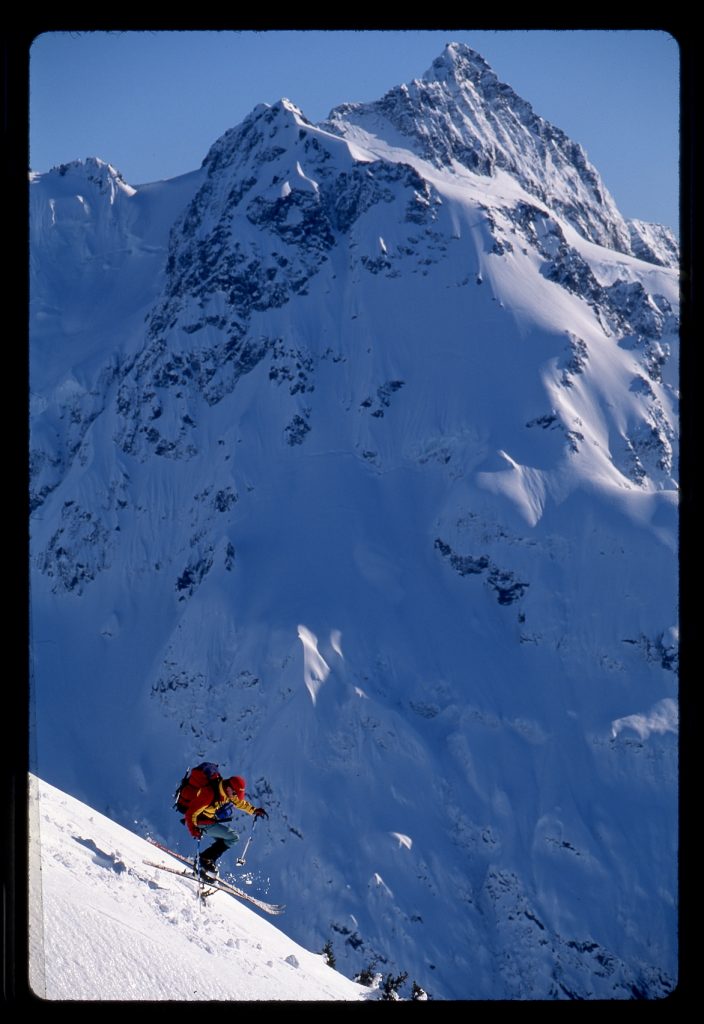Lowell Skoog keeps racking up accolades.

The roster of awards the author has received for his 2020 book, Written in the Snows, rivals his list of pioneering routes in Washington’s Cascades, and no prize is bigger than the National Outdoor Book Award (NOBA) for historical writing. Written in the Snows is the first book about skiing to win in the division and just the second on the subject recognized in any NOBA category.
“The book had already received awards from two ski organizations, and it had been well reviewed, so I felt my work was connecting with the ski community,” Skoog tells me in an email. “But receiving a National Outdoor Book Award indicated the book was reaching beyond that community.” Based on 20 years of research, Written in the Snows is a comprehensive history of skiing in the Cascade Range. While Skoog focuses on home state of Washington, his research dips south a bit into Oregon, namely around Mt. Hood.

Starting with the arrival of Scandinavian immigrants in the Pacific Northwest, Skoog traces the arc of skiing from little-known sport to cultural cornerstone, a growth driven both by individual achievements and communal ski clubs that provided infrastructure for valley dwellers to head for the hills. Along the way, he weaves in his own considerably accomplished story—from growing up in a family of ski jumpers to pioneering endurance routes and traverses in the remote reaches of the North Cascades.
His research into the range’s skiing history started simply out of interest, and the idea to write a book evolved as he accrued more knowledge. When I visited his house last spring, he showed me a room filled with guidebooks, skiing heirlooms, file cabinets of his brother Gordy’s photos, and ski magazines dating back years (including every issue of Backcountry Magazine). He brings that academic attention to detail to the book, going beyond what he calls apocrypha to focus on the facts, names and places that define Cascade skiing history. But he told me that he didn’t want the book to be a rote recitation.
“I wanted to try to give the book sort of a spirit, not just have a bunch of dry facts,” he says. As someone who used his book as pivotal research for my own upcoming history of skiing on the Cascade volcanoes (due out in Issue 151), I’d say he succeeded. Between the exhaustively researched minutiae of seminal events like the Silver Skis Championship that used to run on Mt. Rainier, Skoog intersperses quotes from critical characters and evocative details—like his descriptions of gear strewn across Rainier’s slopes after epic wipeouts in the Silver Skis.




It’s obvious the book evolved out of Skoog’s lifelong love of skiing and the Cascades, and the award givers at NOBA aren’t the only ones who have taken notice. Skoog helped us at Backcountry Magazine compile photos for my upcoming piece, and when we reached out to him this winter, he was fresh off a trip to receive the Western Ski Heritage Award from the Far West Ski Association. He has also notched the Skade Award from the International Skiing History Association. As we approach the spring mud season, it’s a worthy read to add to your bookshelf.
When we last spoke, Skoog didn’t have immediate plans for another project. Instead, he’s still been giving talks about Written in the Snows and enjoying the modicum of limelight that comes with the awards. A former engineer, he’s soaking in this new path, and the fulfillment that comes from seeing something start as an interest, grow into a hobby, then transform into a full-blown success.
Beyond everything else, Skoog says of winning the National Outdoor Book Award, “I was deeply gratified.”
Written in the Snows: Across Time On Skis in the Pacific Northwest is available at Mountaineers.org/books. To read Tom Hallberg’s dive into Cascade skiing history, with invaluable input from Skoog, pick up a copy at BackcountryMagazine.com or subscribe.











Lowell,
Biggy up & respect!
99% sure those photos you refer to are from his brother Carl Skoog.
You may be right, Dennis! Several of the photos in this article are from Carl Skoog’s archives. You can check the photo credits on each one, and it will tell you if they’re from Carl. —Tom